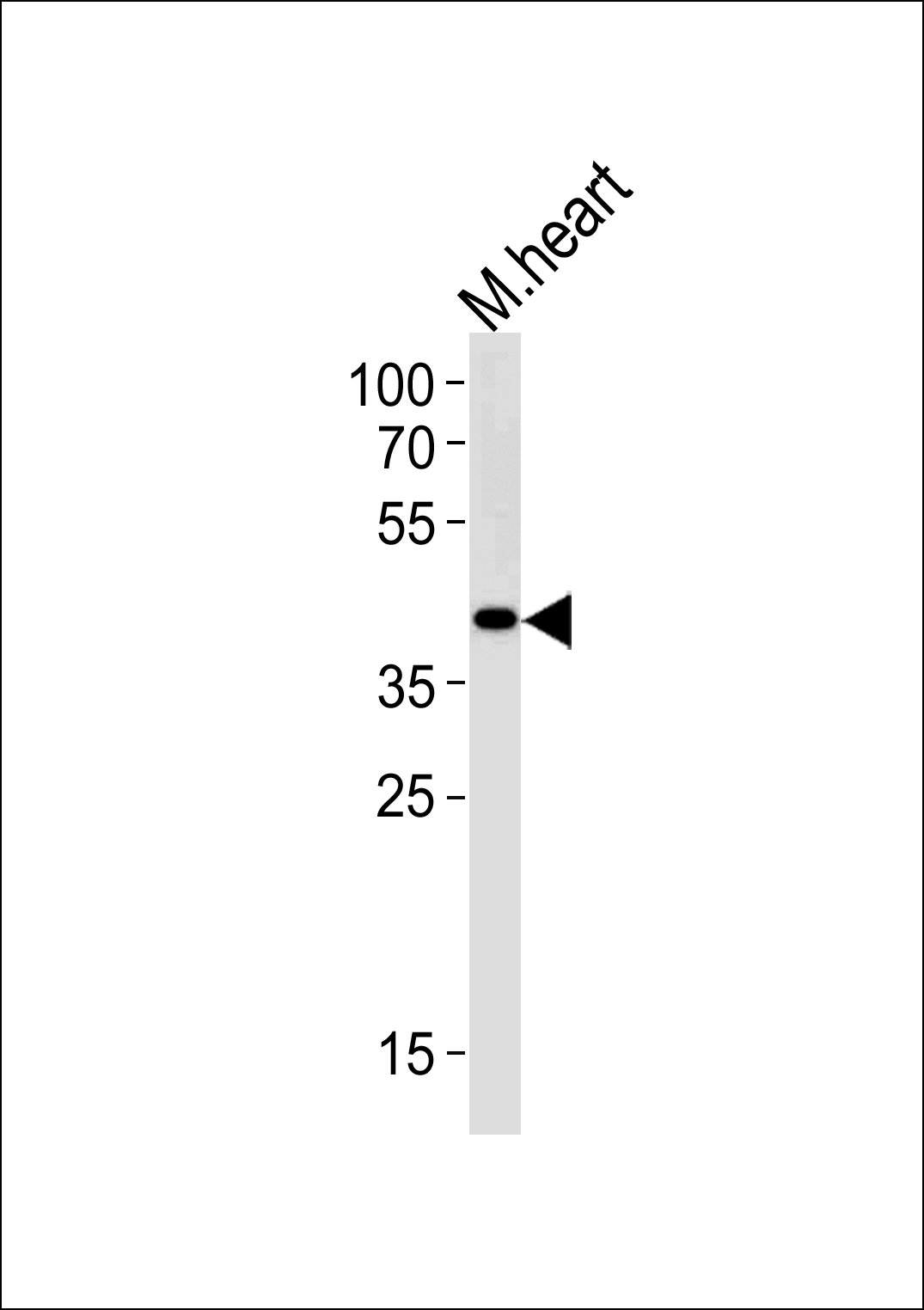M Tfap2c Antibody (N-term)
Affinity Purified Rabbit Polyclonal Antibody (Pab)
- 产品详情
- 实验流程
- 背景知识
Application
| WB, E |
|---|---|
| Primary Accession | Q61312 |
| Reactivity | Mouse |
| Host | Rabbit |
| Clonality | Polyclonal |
| Isotype | Rabbit IgG |
| Calculated MW | 49137 Da |
| Antigen Region | 123-144 aa |
| Gene ID | 21420 |
|---|---|
| Other Names | Transcription factor AP-2 gamma, AP2-gamma, AP-22, Activating enhancer-binding protein 2 gamma, Tfap2c, Tcfap2c |
| Target/Specificity | This Mouse Tfap2c antibody is generated from rabbits immunized with a KLH conjugated synthetic peptide between 123-144 amino acids from the N-terminal region of Mouse Tfap2c. |
| Dilution | WB~~1:1000 E~~Use at an assay dependent concentration. |
| Format | Purified polyclonal antibody supplied in PBS with 0.09% (W/V) sodium azide. This antibody is purified through a protein A column, followed by peptide affinity purification. |
| Storage | Maintain refrigerated at 2-8°C for up to 2 weeks. For long term storage store at -20°C in small aliquots to prevent freeze-thaw cycles. |
| Precautions | M Tfap2c Antibody (N-term) is for research use only and not for use in diagnostic or therapeutic procedures. |
| Name | Tfap2c {ECO:0000303|PubMed:38243114} |
|---|---|
| Synonyms | Tcfap2c |
| Function | Sequence-specific DNA-binding transcription factor that interacts with cellular enhancer elements to regulate transcription of selected genes, and which plays a key role in early embryonic development (PubMed:38243114, PubMed:8660922). AP-2 factors bind to the consensus sequence 5'-GCCNNNGGC-3' and activate genes involved in a large spectrum of important biological functions (PubMed:38243114, PubMed:8660922). TFAP2C plays a key role in early embryonic development by regulating both inner cell mass (ICM) and trophectoderm differentiation (PubMed:38243114). At the 8-cell stage, during morula development, controls expression of cell-polarity genes (PubMed:38243114). Upon trophoblast commitment, binds to late trophectoderm genes in blastocysts together with CDX2, and later to extra-embryonic ectoderm genes together with SOX2 (PubMed:38243114). Binds to both closed and open chromatin with other transcription factors (PubMed:38243114). |
| Cellular Location | Nucleus {ECO:0000250|UniProtKB:Q92754}. |
| Tissue Location | Expressed in lung, ovary and testis. Expressed in most squamous epithelia. Also, detected in several exocrine glands including the prostate, the preputial and salivary glands, serous glands of the tongue and ocular harderian glands |
For Research Use Only. Not For Use In Diagnostic Procedures.
Provided below are standard protocols that you may find useful for product applications.
BACKGROUND
Sequence-specific DNA-binding protein that interacts with inducible viral and cellular enhancer elements to regulate transcription of selected genes. AP-2 factors bind to the consensus sequence 5'-GCCNNNGGC-3' and activate genes involved in a large spectrum of important biological functions including proper eye, face, body wall, limb and neural tube development. They also suppress a number of genes including MCAM/MUC18, C/EBP alpha and MYC.
REFERENCES
Oulad-Abdelghani M., et al. Exp. Cell Res. 225:338-347(1996).
Carninci P., et al. Science 309:1559-1563(2005).
Church D.M., et al. PLoS Biol. 7:E1000112-E1000112(2009).
Mural R.J., et al. Submitted (JUL-2005) to the EMBL/GenBank/DDBJ databases.
Yahata T., et al. Genomics 80:601-613(2002).
终于等到您。ABCEPTA(百远生物)抗体产品。
点击下方“我要评价 ”按钮提交您的反馈信息,您的反馈和评价是我们最宝贵的财富之一,
我们将在1-3个工作日内处理您的反馈信息。
如有疑问,联系:0512-88856768 tech-china@abcepta.com.























 癌症的基本特征包括细胞增殖、血管生成、迁移、凋亡逃避机制和细胞永生等。找到癌症发生过程中这些通路的关键标记物和对应的抗体用于检测至关重要。
癌症的基本特征包括细胞增殖、血管生成、迁移、凋亡逃避机制和细胞永生等。找到癌症发生过程中这些通路的关键标记物和对应的抗体用于检测至关重要。 为您推荐一个泛素化位点预测神器——泛素化分析工具,可以为您的蛋白的泛素化位点作出预测和评分。
为您推荐一个泛素化位点预测神器——泛素化分析工具,可以为您的蛋白的泛素化位点作出预测和评分。 细胞自噬受体图形绘图工具为你的蛋白的细胞受体结合位点作出预测和评分,识别结合到自噬通路中的蛋白是非常重要的,便于让我们理解自噬在正常生理、病理过程中的作用,如发育、细胞分化、神经退化性疾病、压力条件下、感染和癌症。
细胞自噬受体图形绘图工具为你的蛋白的细胞受体结合位点作出预测和评分,识别结合到自噬通路中的蛋白是非常重要的,便于让我们理解自噬在正常生理、病理过程中的作用,如发育、细胞分化、神经退化性疾病、压力条件下、感染和癌症。






